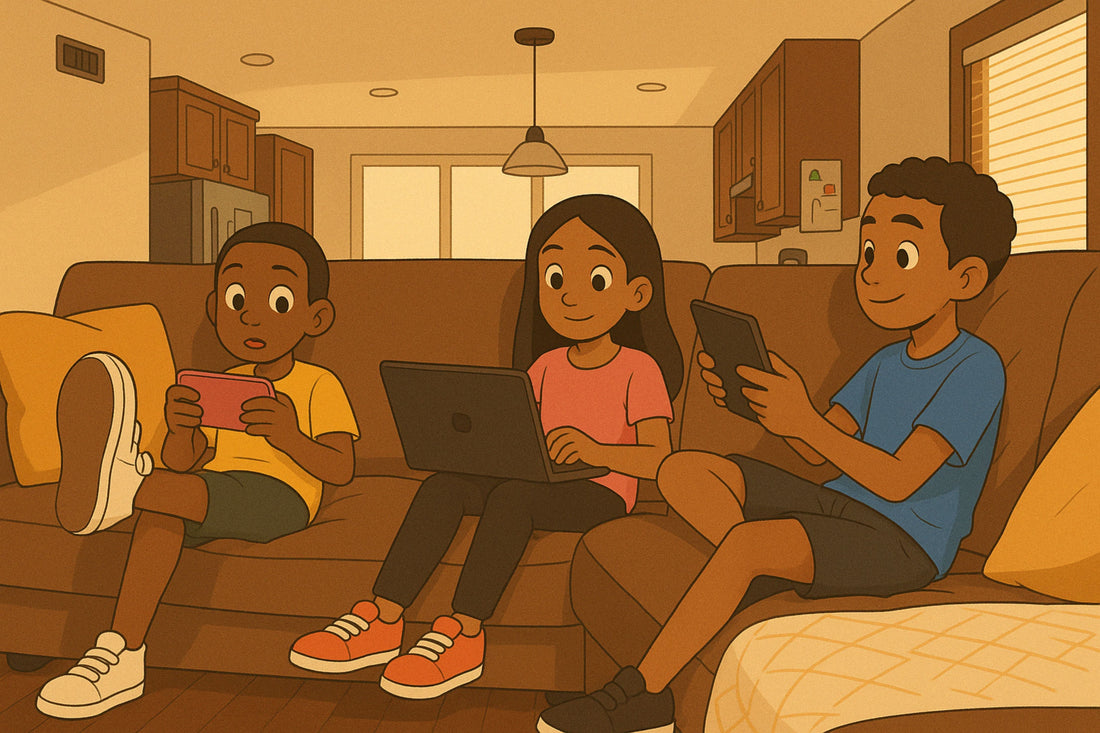
Trusting The Next Generation : Creativity, AI, and Cultural Legacy
Share
Trusting the next generation has long been a cornerstone of legacy within the church. Yet, this trust doesn’t come without its challenges. For older generations, it often requires a willingness to stretch —learning new slang, adapting to different methods, and embracing life lessons through the lens of youth. It’s not just a handoff; it’s a humbling exchange that calls for openness, patience, and faith in the unfamiliar.
In this new era shaped by artificial intelligence, trusting the youth takes on even greater significance. As schools and institutions integrate AI tools into learning and innovation, young minds are often the first to adapt, explore, and lead. For many elders, the pace of technological change can feel disorienting, even intimidating. Yet, it is precisely at this moment that trust becomes vital—not just in the tools, but in the ability of the next generation to use them wisely. Empowering young people to navigate this digital frontier means allowing them to question norms, experiment with ideas, and create solutions that reflect both their time and their truth. Trust, then, becomes an act of faith in their potential to carry the culture forward while shaping the future.

As a small business owner, the demands of running operations around the clock often leave little room for family—especially during busy seasons. But last week, I was grateful to carve out some meaningful time with my nephews. They’ve always known that Auntie E and Auntie L run a T-shirt business, so to them, the possibilities of creation feel limitless. As I was getting ready to leave their house, one of them asked if I could stay a little longer. That simple request sparked a beautiful conversation—one that turned into dreaming about putting a logo on a T-shirt together… or so I thought.
The moment I saw the image he had created using AI and Canva, I was both amazed and genuinely shocked. It wasn’t just the quality of the design—it was the realization that such a young student could harness advanced tools to bring his imagination to life so effortlessly. Artificial Intelligence has quickly become a transformative force in education, especially at the elementary level. By integrating AI-driven platforms into learning environments, children are now able to express creativity, learn at their own pace, and explore subjects with a level of interactivity and personalization that traditional methods simply can’t match.

Moments like that remind us why it’s so important to give young people the creative freedom to express their visions. When we provide them with the tools and space to explore their ideas, we’re not just encouraging imagination—we’re empowering the next generation to become confident thinkers, innovators, and leaders. Giving children the chance to shape their own narratives is one of the most powerful ways to show them that their voice matters in shaping the future.
Despite these concerns, it’s clear that when used thoughtfully and with guidance, AI can play a powerful role in shaping a generation that’s not only tech-savvy but also capable of using these tools to solve real-world problems and push the boundaries of innovation.
While I don’t have children of my own, the joy we all shared in that moment—and especially the look on my nephew’s face—was unforgettable. It was the kind of joy that comes from feeling truly seen, heard, and valued. His expression said it all: pride, excitement, and the confidence that his creativity mattered.
This new wave of learning is not just about making education more engaging—it’s about empowering young minds to become creators and problem-solvers in a world that increasingly runs on technology. However, not everyone views this shift positively. Many critics express concern that early exposure to AI tools might hinder the development of foundational skills, reduce critical thinking, or lead to over-reliance on automation. There’s also a deeper unease about the ethical implications and long-term impacts of AI on childhood development.
Small businesses, often rooted in tradition and tight-knit communities, have a unique opportunity to tap into the fresh, unfiltered creativity of the younger generation. When young minds are given the space to share their visions—through design, storytelling, or innovative thinking—they often offer perspectives that challenge conventional norms and open new avenues for growth. By listening to and collaborating with youth, small businesses can reimagine their branding, pivot their strategies, and even discover untapped markets. In a world that’s constantly evolving, it’s often the bold, imaginative ideas from the youngest voices that can redirect a business toward relevance, innovation, and long-term impact. At its heart, trusting the next generation isn’t just about stepping aside —it’s about walking alongside them. Whether in church pews, classrooms, or small business workspaces, the path forward depends on intergenerational collaboration, creativity, and courage. If we are willing to listen, to learn, and to let go of rigid expectations, we’ll discover that the youth don’t just inherit the future—they actively shape it. And with the right support, they just might lead us somewhere brighter than we ever imagined.
